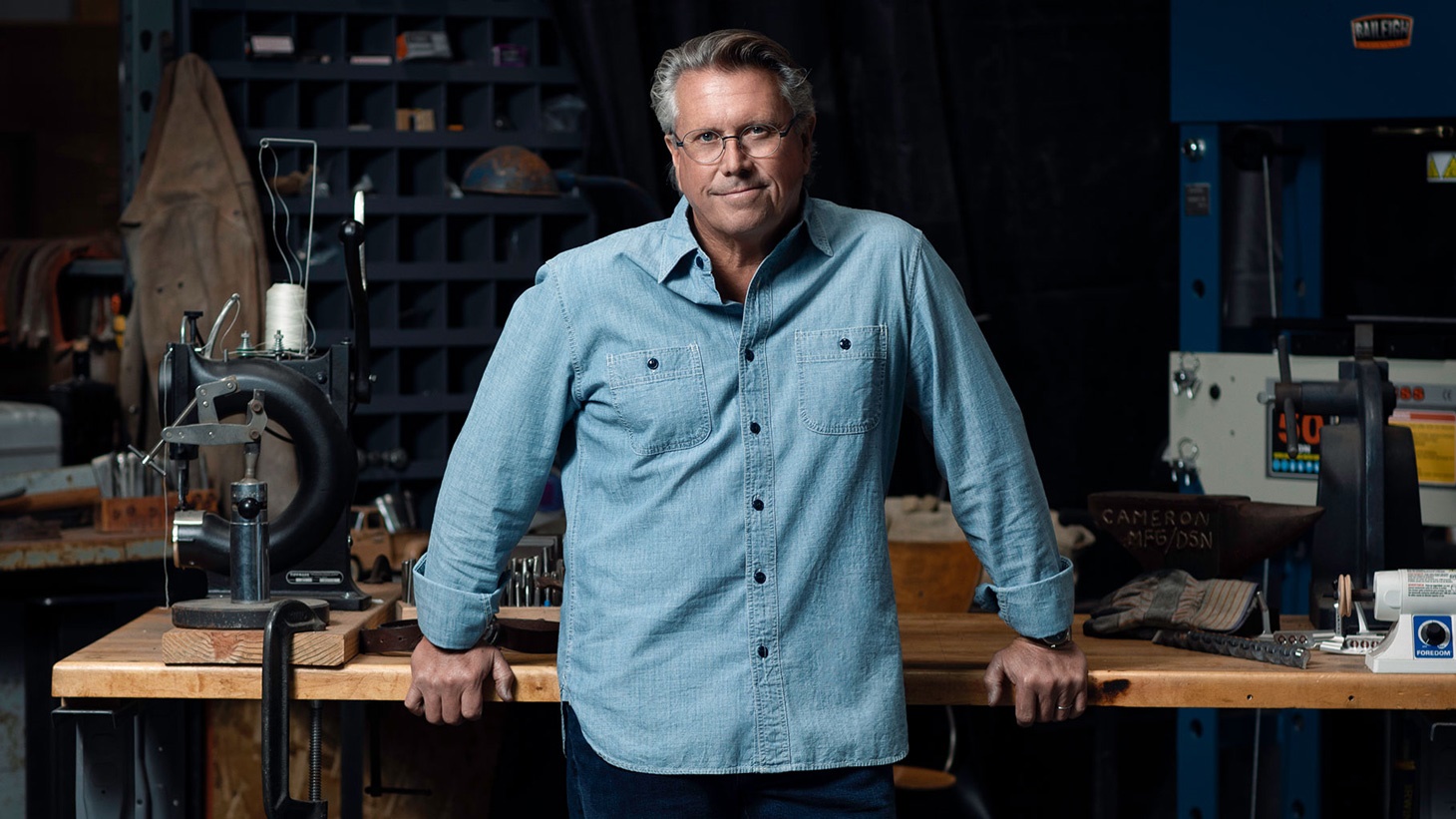
Our friends over at the Scotty Cameron Putter Studio recently sat down with Scotty for a casual conversation about his new line of putters, what was different and exciting, as well as some of his thoughts about all things putters and putting-related. They recently posted this Q&A on ScottyCameron.com and we wanted to share it with all of you just in case you haven't seen it yet. Check it out below and get a glimpse into the discussion.
Q: Let’s start with the name. Why Special Select?
Scotty: There’s always a method to creating a putter family lineup and name. I took our best models and put them into two lines—one for traditional blades and one for our mallets. I started there and then devised my plan.
Our traditional blade and mid-mallet family of putters has been called some version of "Studio" or "Select" for years. I thought we had too many names. So, I aced the Studio name and went with Select. But I wanted this line to be named differently since we've used Select by itself since 2012. The name Special Select was inspired by a favorite wine of mine. The name Special Select had been in my mind for some time. And these models are the very best I could make. They are Special Select putters.
Q: What’s new overall with the Special Select family?
Scotty: As I evolved the Select line over the past 8 years in keeping with the times, the putter got too wide, long and tall. We’re talking millimeters. Very minute changes over time that are easier to study when you look back. Why did putter sizes change? Head weights have gotten heavier because grips have gotten heavier, shafts have gotten shorter. Players wanted it. Again, in meeting the demands of players, we gradually crept up the weights and sizes. I wanted to get back to the basics. Keep it pure. I wanted to get back to the pure milled shapes we’re known for. Modern classics.
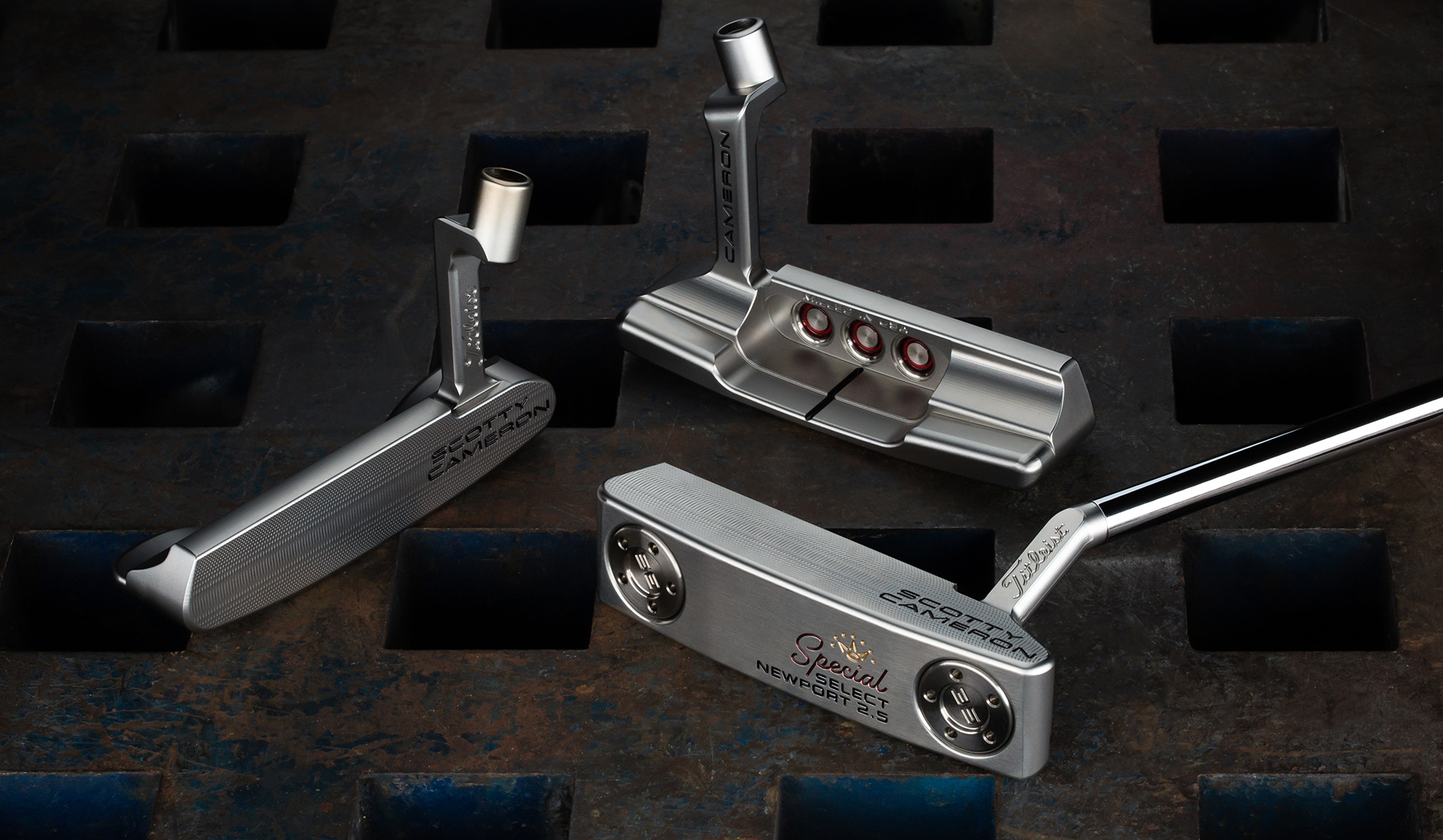
We’re still making blades. Familiar shapes. The Newport, Newport 2 and everything in the line needs to be of that frame of mind. There’s a look I’m always after. So, if you started from the original Newport and Newport 2 shapes, what I create going forward needs to look like a Newport. It needs to look like a Newport 2. I have more freedom with the mid-mallets (e.g., Fastback 1.5, Flowbacks, etc.), because those aren't really the classics, where the Newport and Newport 2 are from way back and there’s an expectation. So the goal was take the best traits of those and roll out a brand new line with hints to the past. We have now surpassed a lot of the early styles and have made gradual—but vast—improvements over the years. Better milling technology. Better material, know-how. Experience. Everything went into this line.
Q: Tell us about this new grip.
Scotty: I call it the Pistolini Plus. The grip has gotten larger—meaning thicker and a bit heavier—compared to our older grips. We used to be closer to 56 grams. This one is almost 80, 77 to 80 grams. The feel of this grip is what we were looking for and rubber performs the best in damp or wet conditions. It just feels premium. A bit thicker and less tapered with a fuller lower hand. It’s gray with white lettering…not the dancing font. We went to more of a faster, modernized font.
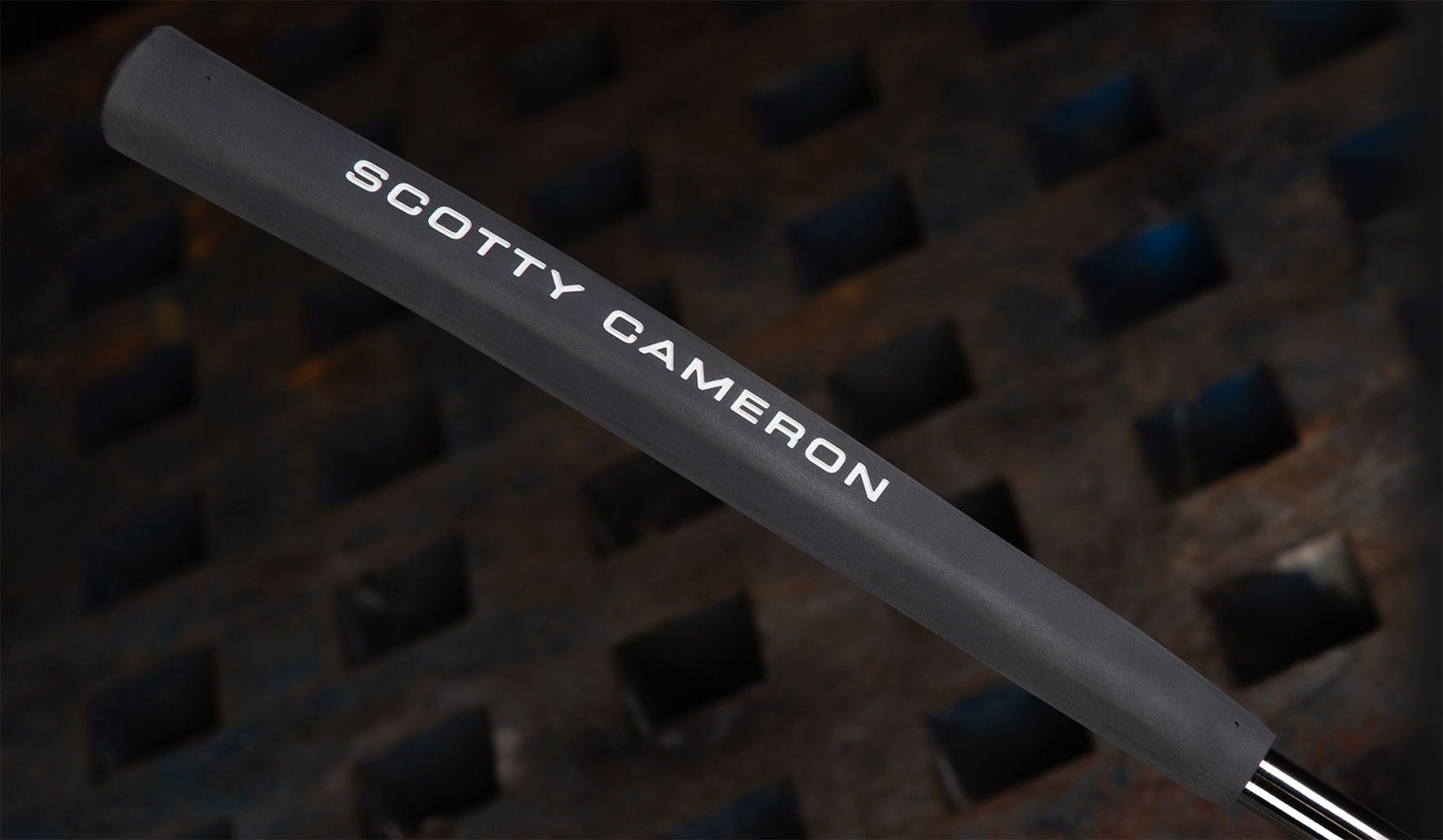
The shaft band is new. The headcover is new. I just thought it was time to really show that the yellow is for our Phantom X line and the red is for the new Special Select. That's kind of where we're going with the headcover. So when you look around at a golf course, you look for a red or yellow headcover in the bag. You can kind of see who’s gaming what. Who’s on the team.
Q: How did you get the putters more compact, but heavier while keeping the head weights up to modern day specs?
Scotty: In paring down the size for the new blades, we still wanted the weight heavy enough but wanted to keep the head smaller, sleeker and more compact. Again, we’re talking a few grams at most here and there. Even though I made the putter head smaller on this line, we still got it heavy the way we like it. And the way we picked the weight up on the blades was to use tungsten sole weights in the heel and toe.
Tungsten is a lot more expensive than stainless steel is, but it’s heavier. They're still silver in color, but won’t be marked on the product as tungsten because we’re only using tungsten for the blades. With the mid-mallets like the Del Mar, Squareback 2, like the Fastback 1.5 and the Flowbacks, we use stainless steel sole weights because those head shapes have more places to make up the weight with their stainless steel design. Due to the sizes of the Newport, Newport 2, Newport 2.5, we found tungsten to be perfect.
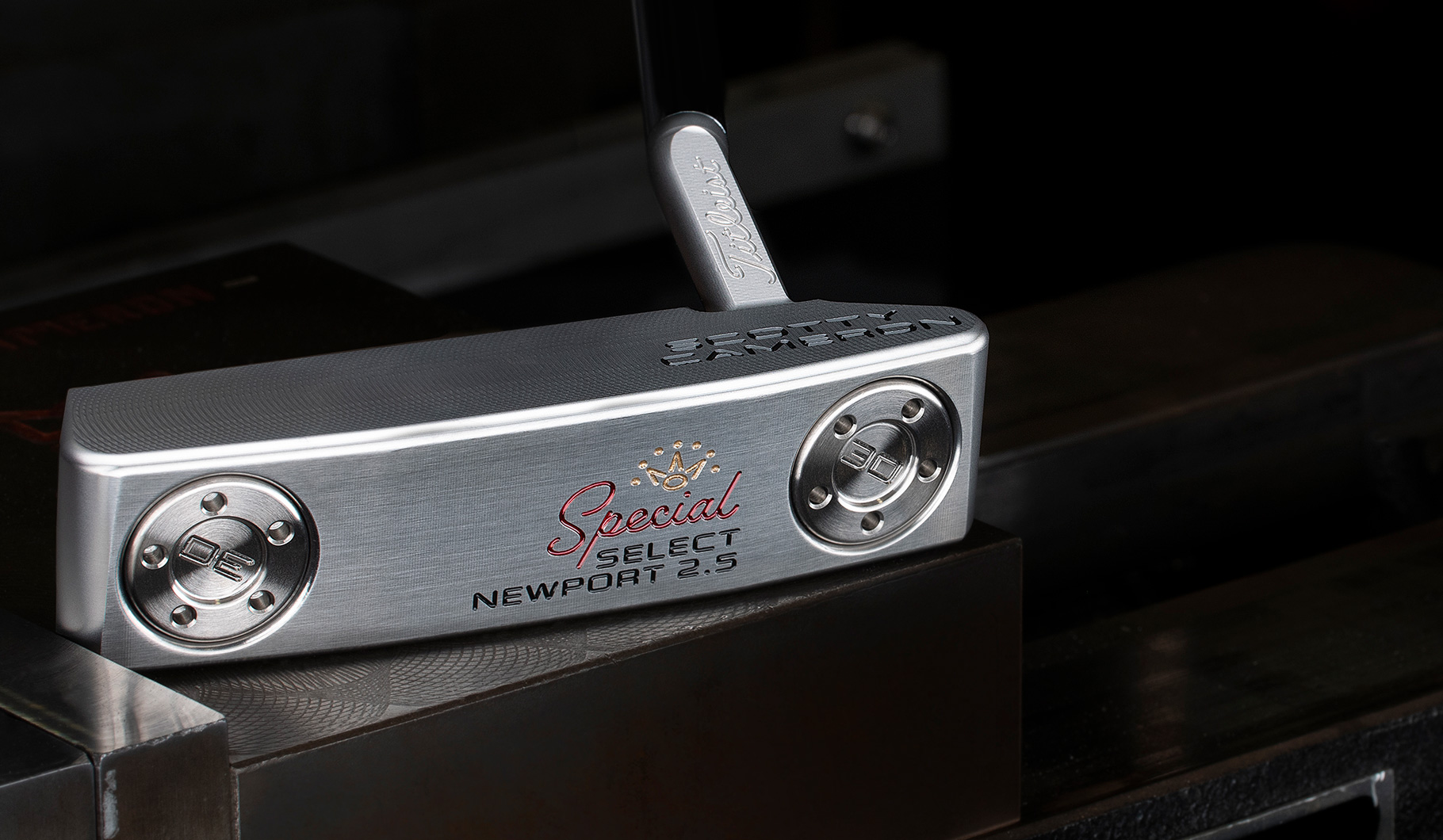
It's a good thing getting the tungsten out to the heel and toe. When we do get it back and out to the perimeter, it's a good thing. It moves the MOI out a little bit and makes the sweet spot a little larger. But the key thing is that we get the head shape the way we want. Size matters and our purist players really like the proper head size. It's proper and the weight feels proper. Now, we're paying more for the materials, but we're making a better product.
Q: How do you incorporate feedback from the pros?
Scotty: I listen to guys like Jordan, Adam, Justin and so many of the other great players who come into the Studio every week. I've listened to what they like (picks up a Special Select Newport 2 for demonstration). The width of the putter from here to the back cavity is quite a bit thinner. The face height, as you can see, look how low-slung and sexy that is. In comparison to the 2018 Select, which was just a little oversized. This stripped down and sleek look really came from guys on Tour saying they wanted a smaller, more proper setup. Even into the heel area you can see just how many changes we incorporated. The face profile and the height are completely different. It’s subtle, but side-by-side, you can really see the differences. It’s the most Tour-like product we’ve ever made for everyone.
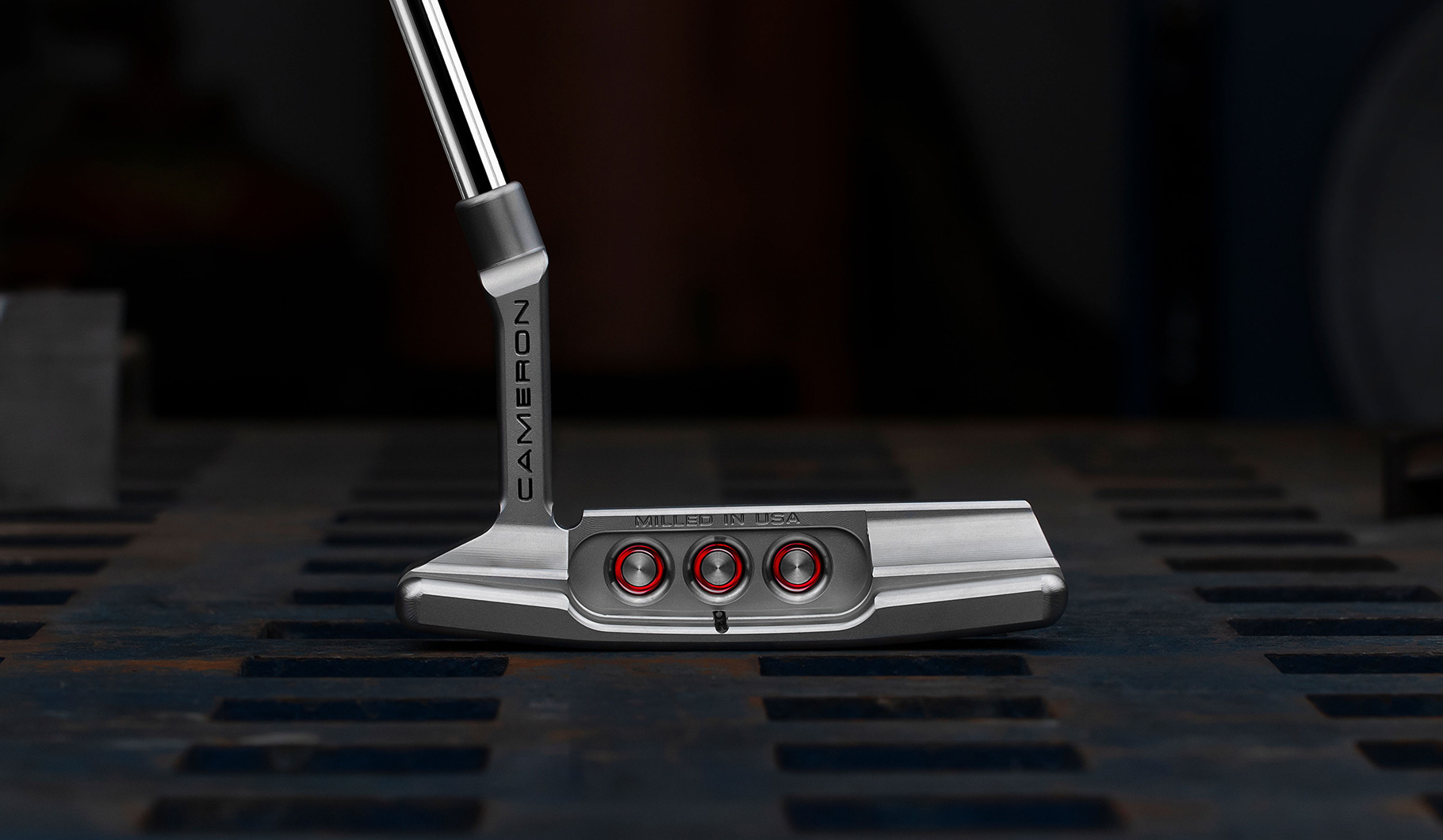
And it’s a delicate balance. If we shave this thing down and make it too small, the pros say they feel like they have to get the shaft back in order to hit it in the dead center of the sweet spot. There is a visual connection from their senses to the putter head. The other one I talked about is I've made the topline over the years thicker and thicker because I wanted the head to be heavier to incorporate the weight. Those guys pick up on that thickness. Another reason, when I made this thicker, I can give a bigger radius in this second cut and on the third cut trying to match this area (the back flange) with the end here. Because normally it was not a big radius and I thought it should match. But the pros picked up on this thickness and wanted the putter to sit flatter onto the ground, thinner looking.
Q: You’ve said this plumbing neck is the same, but completely different. How so?
Scotty: I’ve completely reworked the plumbing neck for the Newport, Newport 2 and Squareback 2. But it’s still a plumbing neck. When you analyze the neck, it comes straight up and then it angles back at the top. This new design angles back a lot earlier. It's completely new. Looking down at it from above, I call it a D-neck. The front of the neck now has a big radius and a flat little radius around the other side compared to the 2018 Select neck, which is kind of symmetrical all the way around.
Q: What's the benefit?
Scotty: From address it looks more squared off as it intersects visually with the topline. Easier to align. Better visibility of the leading edge. We had a lot of guys saying that the way our previous plumbing neck leaned back it looked like it was angled to the left. If you look at the top view of the old neck you can see it.
Q: Does the new neck socket where the shaft is installed sit physically lower than before?
Scotty: It's slightly lower. The socket is shallower, too, because I don't want the weight that high. So, I begged, borrowed and stole to get that weight down. You shave millimeters where you can. But you look from a back view, how round it is one way and how square it is the other way. It’s square and then rolls off round. I don't see much of a big flat area. It all depends on your eye.
Q: How does this factor into alignment?
Scotty: I think when you’re looking down at the topline of the putter the neck and the shaft should all align naturally. I’ve actually positioned the neck back from the face to help it all line up. So, if you look, this new plumbing neck sits back from the top of the face. And I hide that by designing a bigger radius in the elbow bend. All of those little things that guys have talked about over the years about offset, onset, softer necks, lower this, lower that, less radius here…it all played into this neck. It really has.
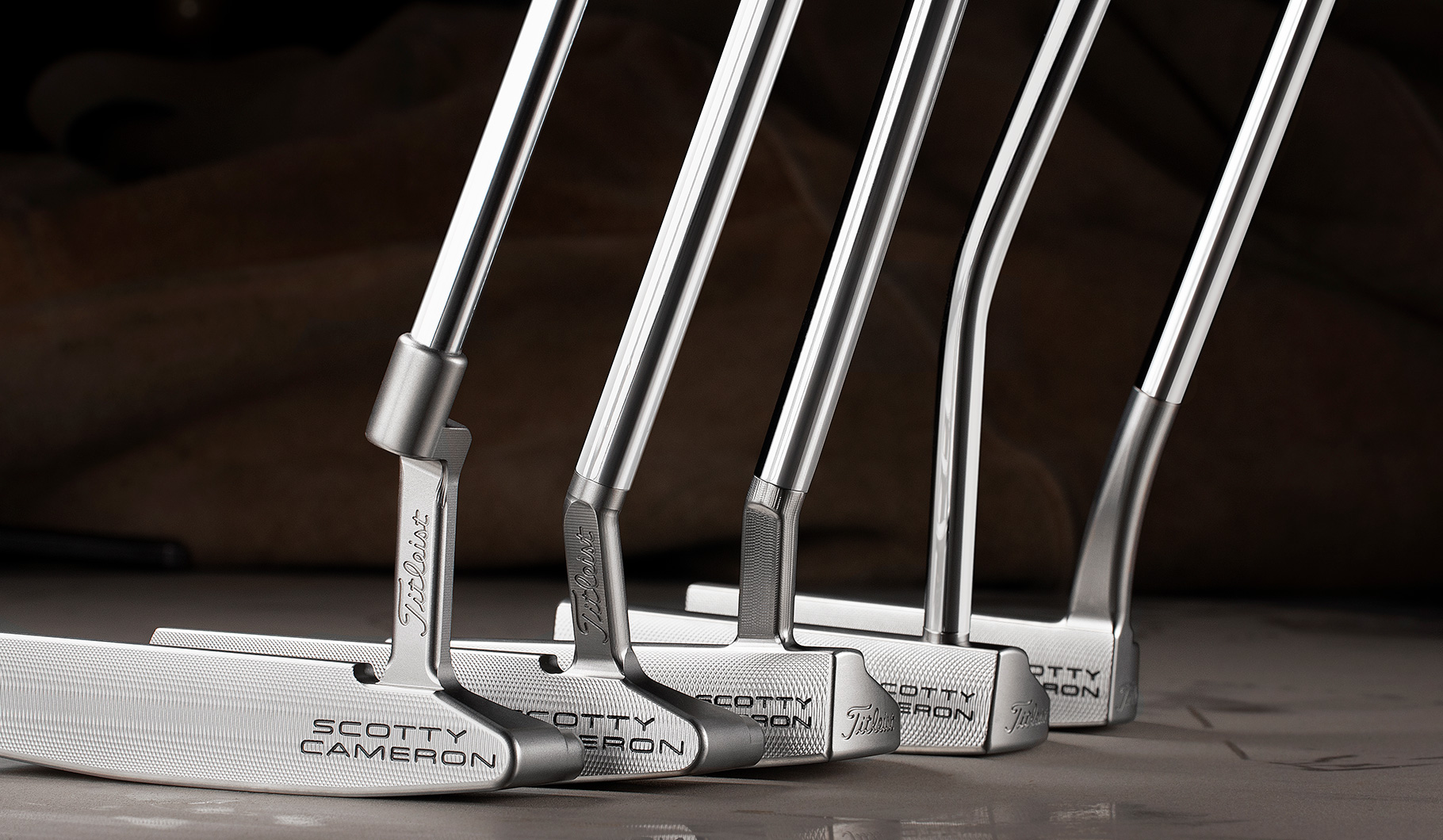
Q: Do you see the Special Select line an evolution of the previous Select family?
Scotty: I don't want to dog on the old line and say that it was bad, because it wasn't bad at all. We've won a lot of tournaments. Is the new Porsche 911 better than the old one? Electronics? Yes. But the last one wasn't bad. For example, the old Speedster Porsche. I want one of those now. But small changes in the spirit of improvement make a product better. It’s the same deal with every putter model. Small changes to make something better. Face profile, face height, width of the putter, this is wider than that but also wider here, flatter there. I took a little from here, a little from there (Scotty is pointing to the bumpers, topline, flange and back cavity) and a lot from here and made it more streamlined, better to the eye. It’s like a sculpture. This is the best it can be up until right now.
Q: Is the sound similar to the 2018?
Scotty: It is. But it's completely different because our 2018 Select putters had face inserts and Special Selects do not. Inserts, a trend? Absolutely. Can you affect sound and feel with inserts? Absolutely. When you use great material, do you need to affect it? Not at all. And inserts are difficult, meaning a lot of work to carve out, to put in the screws, to create the insert. Vibration dampening. It’s a lot of effort. But, our design and milling technology allow for precision manufacturing and assembly of those parts. I loved that line and our inserts. But we have more invested in Special Select with the addition of tungsten as a component. It’s more expensive, but it’s worth it.
Little things make this line fun, too. For instance, the original, classic heel and toe blades had a Made in the USA stamping on the back. It just had a look. Classic. So, when I put MILLED IN USA back here experimenting, it kind of twanged that look of the old, and I felt it worked simply to get the guys on Tour who appreciate the classics to raise an eyebrow. It just has a look. The key was to have that look of a classic while updating everything else for today’s players.
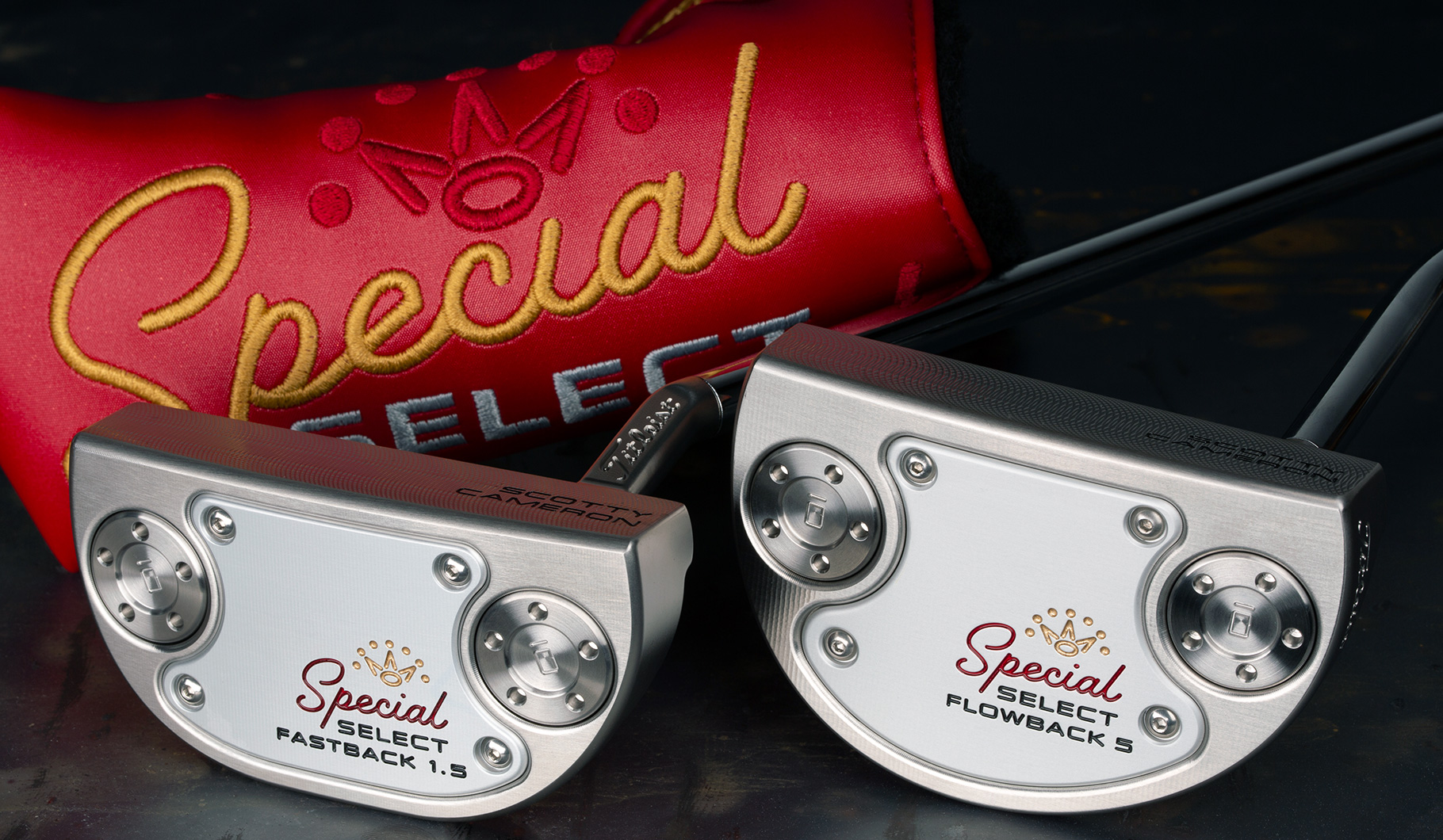
Q: Tell us about the origin of the new Cherry Bomb design in the back cavity.
Scotty: So, back in the day when our defending Masters champion needed just a bit of weight shaved off his putter, I milled out a circle in the back cavity to take off a few grams. Then I painted it red. It became the signature Cherry Bomb. But when you mill a circle like that, you would think it’s completely flat. In reality, there's a slight dome in the center, so it's not perfectly flat. It's cutting with the outside of the end mill. So, what does this have to do with anything?
When his caddie would clean the putter, that red dot over time would wipe off in the center. It ended up looking like a Lifesaver. The towel couldn't get into the corners and it wiped off the paint in the center where the high spot is. Every once in a while, we’d get the putter back at the Studio and I’d put new paintfill in. But that look is how I came up with the new Cherry Bomb look. Why do that when we're known for the full red circles? Because I want it to look different from last year’s model. And, it does have a cool look. It's another way to stand out and be different. Does it perform? It has nothing to do with that. It's a visual and part of the graphical evolution of our flagship line.
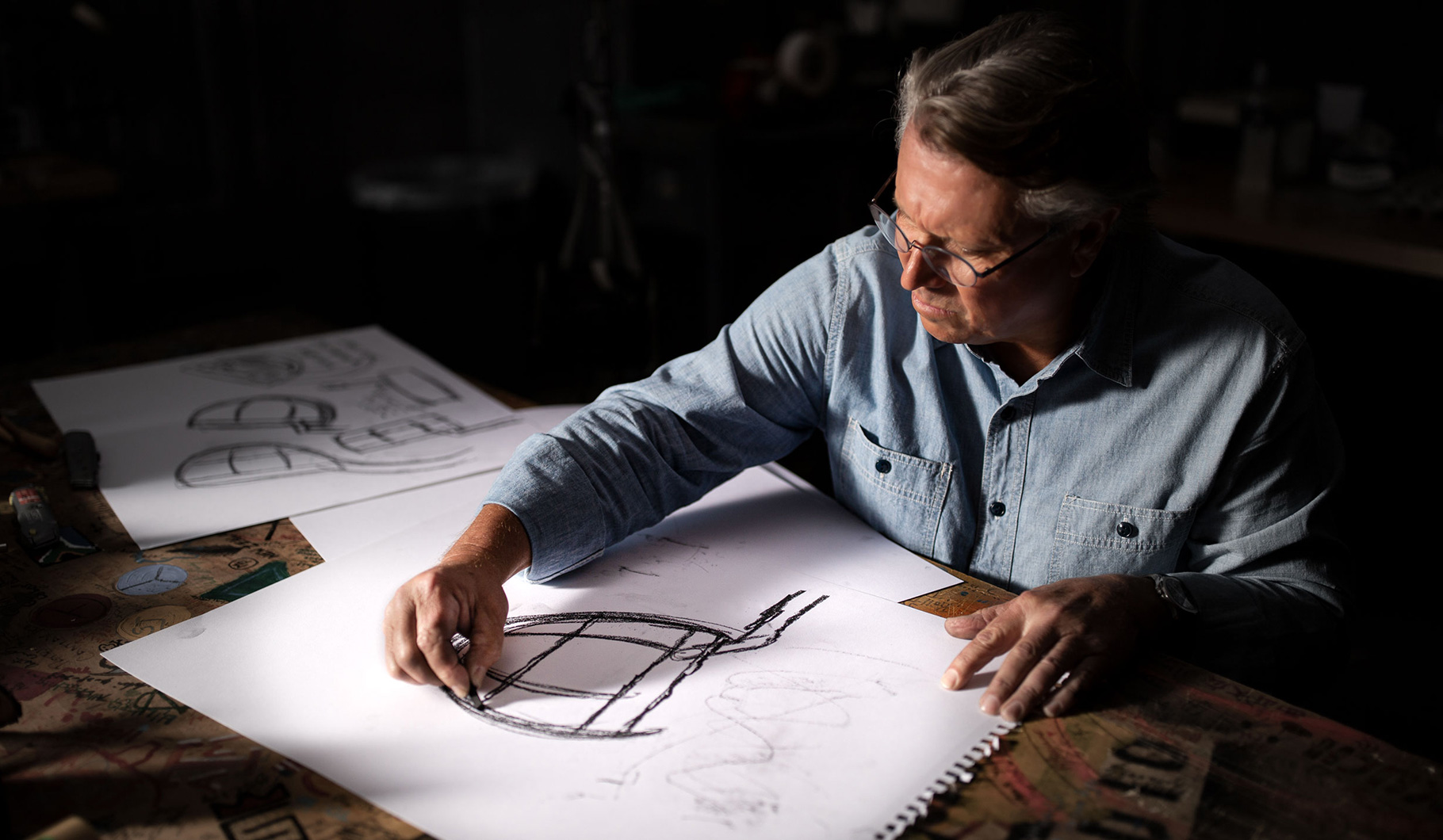
Q: Tell us about the soft tri-sole design of the Special Select blades (Newport, Newport 2 & Newport 2.5).
Scotty: The Tour-inspired soft tri-sole design helps the player get it soled at address for a proper setup and a stable, pleasing view of the topline from the moment the putter is set on the green. Pros could tell where the flat part of the sole is immediately. It's a feel deal. A lot of guys say with a tri-sole it sits better and they can feel when the toe goes up in the air. So they know when they're in a bad position versus proper. It’s just another Tour putter feature that we’ve rolled out into the line because it works. The Special Select Newport 2 is the most Tour-like of its kind.
Q: How do these new models make you feel, now that they’re finished?
Scotty: Whenever I got a new putter and it looked good to my eye, I putted with it so well. But when I got a putter that I just hated the look of…negative thoughts, negative putting. I love the look of these. The blades are amazing. I love the variety in the mid-mallets. I wanted these hugging the ground to be lower and more streamlined, to look better to the eye, more suited to feel. Why are they better? Better looking, better performing. Or is it better performing if it looks better? They’re sleeker. That's what the pros want. We've always talked about how we experiment on Tour. What wins events…if we can, we bring it to market. These putters are crafted based on what works for the best in the world. I still think any serious, dedicated golfer will “get” what I’ve tried to do with the Special Select line. I’m very happy to see how they’re received by players around the world.
Q: Any parting thoughts?
Scotty: After 25 years, it’s interesting to look back on lots of putters. So many designs. And to learn from the past styles and the combined ideas that make the next one just a little better. Again, the goal was to make a new Newport 2, but don't reinvent it. Just make it better. I think from our results on Tour and feedback from guys picking them up, absolutely we're on track. We’ve come out with what I believe to be our best line yet with Special Select and I say, “Why didn't I do this 10 years ago?” I wasn't able to do it 10 years ago. This is the latest and greatest. And no right, no wrong. But, this is where we are with solid milled putter making. Everything we’ve learned from the past has gone into this. This is the top of the game.